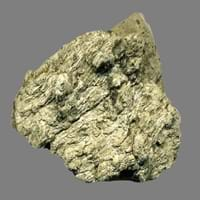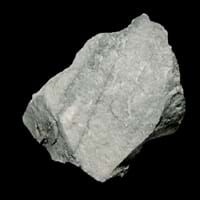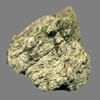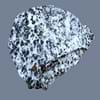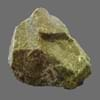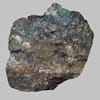Definition
Dacite is a volcanic igneous rock which is rintermediate in composition between andesite and rhyolite
Quartzite is a non-foliated metamorphic rock that forms by the metamorphism of pure quartz Sandstone
Origin
Romania and Moldova, Europe
Unknown
Discoverer
Unknown
Unknown
Etymology
From Dacia, a province of the Roman Empire which lay between the Danube River and Carpathian Mountains where the rock was first described
From quartz + -ite
Class
Igneous Rocks
Metamorphic Rocks
Sub-Class
Durable Rock, Soft Rock
Durable Rock, Hard Rock
Group
Volcanic
Not Applicable
Other Categories
Fine Grained Rock, Medium Grained Rock, Opaque Rock
Medium Grained Rock, Opaque Rock
Texture
Aphanitic to Porphyritic
Foliated, Granular
Color
Bluish - Grey, Brown, Grey, Light to Dark Grey
Black, Blue, Brown, Green, Light Grey, Purple, White, Yellow
Durability
Durable
Durable
Appearance
Vesicular
Lustrous
Interior Uses
Decorative Aggregates, Entryways, Interior Decoration
Countertops, Decorative Aggregates, Flooring, Homes
Exterior Uses
As Building Stone, Paving Stone, Garden Decoration
As Building Stone, As Facing Stone, Garden Decoration, Paving Stone
Other Architectural Uses
Curbing
Curbing
Construction Industry
As Dimension Stone, Construction Aggregate, for Road Aggregate, Landscaping
Arrowheads, As Dimension Stone, Cement Manufacture, Construction Aggregate, Cutting Tool, for Road Aggregate, Making natural cement, Production of Glass and Ceramics, Rail Track Ballast, Roadstone
Medical Industry
Not Yet Used
Not Yet Used
Antiquity Uses
Artifacts
Artifacts, Jewellery, Monuments, Sculpture
Commercial Uses
Commemorative Tablets, Creating Artwork
An Oil and Gas Reservoir, As armour rock for sea walls, Cemetery Markers, Commemorative Tablets, In aquifers, Laboratory bench tops, Petroleum reservoirs, Soil Conditioner, Source of Magnesia (MgO), Tombstones, Used in aquariums
Types
Footwall Dacite, Hanging wall Dacite, Tuff and Biotite Dacite
Not Available
Features
Host Rock for Lead, Is one of the oldest rock
Generally rough to touch, Is one of the oldest rock
Archaeological Significance
Monuments
Not Yet Used
Used
Famous Monuments
Not Applicable
Data Not Available
Sculpture
Not Yet Used
Used
Famous Sculptures
Not Applicable
Data Not Available
Pictographs
Used
Not Used
Petroglyphs
Used
Not Used
Figurines
Not Yet Used
Used
Formation
Dacitic magma is formed by the subduction of young oceanic crust under a thick felsic continental plate. Further, the Oceanic crust is hydrothermally altered as quartz and sodium are added.
Quartzite forms from sandstone and the mineral quartz being put under extreme heat and pressure.
Mineral Content
Amphibole, Apatite, Biotite, Feldspar, Garnet, Hornblade, Magnetite, Plagioclase, Pyroxene, Quartz, Zircon
Chlorite, Epidote, Hematite, Kyanite, Magnetite, Muscovite or Illite, Quartz
Compound Content
Ca, Fe, Potassium Oxide, Mg, Potassium, Silicon Dioxide
Aluminium Oxide, CaO, Iron(III) Oxide, MgO, Sodium Oxide, Silicon Dioxide
Types of Metamorphism
Burial Metamorphism, Cataclastic Metamorphism
Burial Metamorphism, Cataclastic Metamorphism, Hydrothermal Metamorphism, Regional Metamorphism
Types of Weathering
Biological Weathering, Chemical Weathering, Mechanical Weathering
Biological Weathering, Chemical Weathering, Mechanical Weathering
Types of Erosion
Chemical Erosion
Chemical Erosion, Coastal Erosion, Water Erosion, Wind Erosion
Grain Size
Medium to Fine Coarse Grained
Medium Grained
Fracture
Conchoidal
Uneven, Splintery or Conchoidal
Porosity
Less Porous
Less Porous
Luster
Subvitreous to Dull
Vitreous
Compressive Strength
Not Available
Cleavage
Perfect
Indiscernible
Toughness
Not Available
1.9
Specific Gravity
2.86-2.87
2.6-2.8
Transparency
Translucent
Transparent to Translucent
Density
2.77-2.771 g/cm3
2.32-2.42 g/cm3
Resistance
Heat Resistant, Impact Resistant, Pressure Resistant, Wear Resistant
Heat Resistant, Impact Resistant, Pressure Resistant, Wear Resistant
Deposits in Eastern Continents
Asia
Not Yet Found
China, India, Israel, Russia, South Korea, Thailand, Turkey
Africa
Not Yet Found
Ethiopia, Morocco, South Africa, Zimbabwe
Europe
France, Greece, Romania, Scotland, Spain
England, Italy, Norway, Scotland, Sweden, United Kingdom
Others
Not Yet Found
Greenland
Deposits in Western Continents
North America
USA
Bahamas, Canada, USA
South America
Argentina, Bolivia, Chile, Colombia, Ecuador, Peru, Venezuela
Brazil, Colombia, Venezuela
Deposits in Oceania Continent
Australia
New Zealand, South Australia, Western Australia
New Zealand, Queensland, Western Australia
All about Dacite and Quartzite Properties
Know all about Dacite and Quartzite properties here. All properties of rocks are important as they define the type of rock and its application. Dacite belongs to Igneous Rocks while Quartzite belongs to Metamorphic Rocks.Texture of Dacite is Aphanitic to Porphyritic whereas that of Quartzite is Foliated, Granular. Dacite appears Vesicular and Quartzite appears Lustrous. The luster of Dacite is subvitreous to dull while that of Quartzite is vitreous. Dacite is available in bluish - grey, brown, grey, light to dark grey colors whereas Quartzite is available in black, blue, brown, green, light grey, purple, white, yellow colors. The commercial uses of Dacite are commemorative tablets, creating artwork and that of Quartzite are an oil and gas reservoir, as armour rock for sea walls, cemetery markers, commemorative tablets, in aquifers, laboratory bench tops, petroleum reservoirs, soil conditioner, source of magnesia (mgo), tombstones, used in aquariums.
